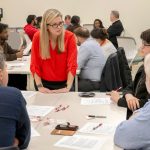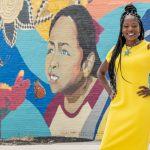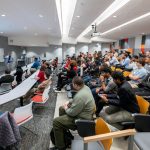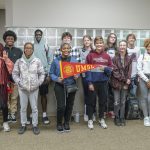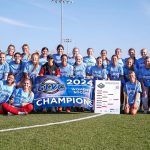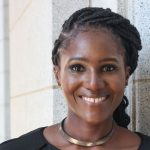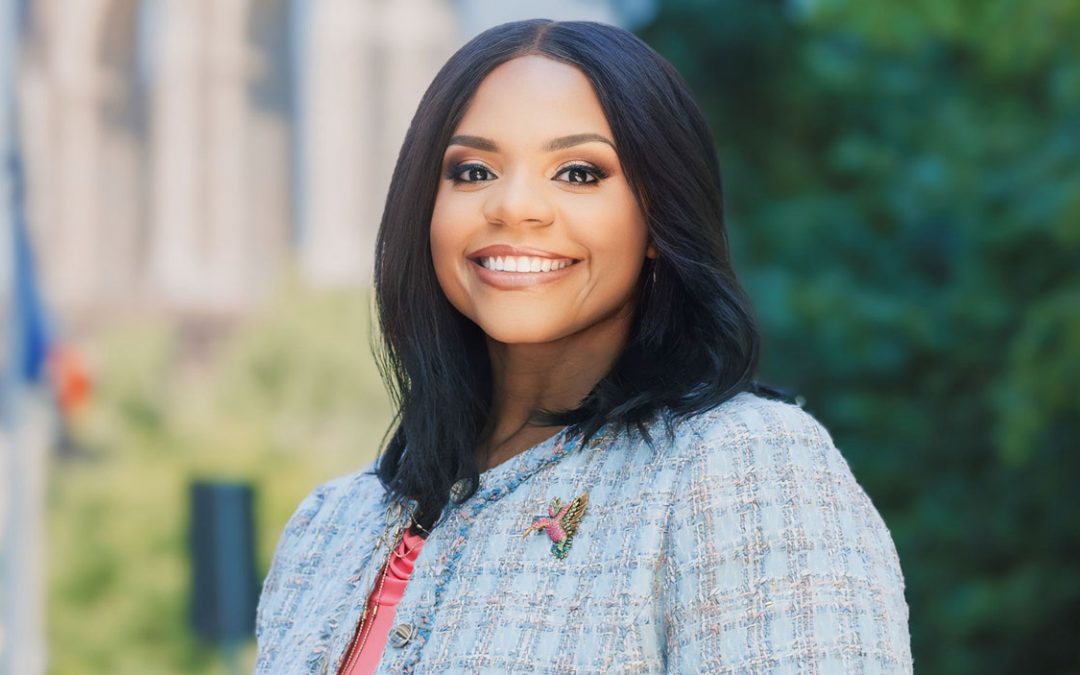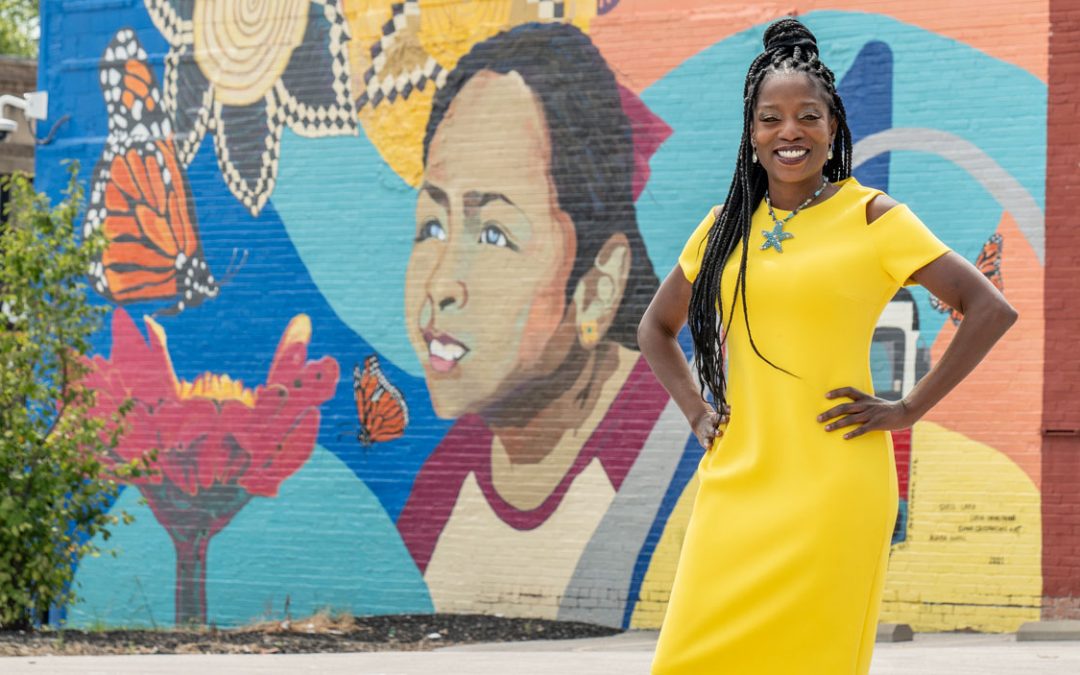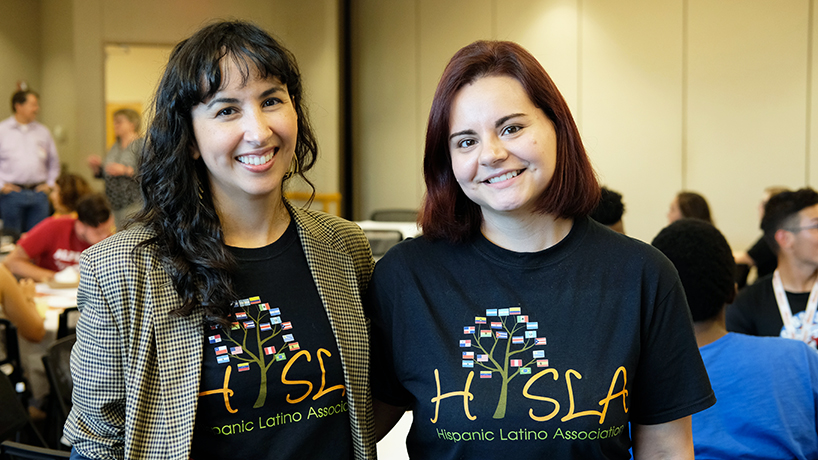
Luimil Negrón (left) and Keila Gonzalez (right) are working to build the Hispanic and Latinx community and resources at UMSL. (Photo by August Jennewein)
On its 30th anniversary, the University of Missouri–St. Louis’ Hispanic Latino Association is broadening its scope by looking within.
“We are changing because we want to grow,” said Keila Gonzalez, vice president of HISLA and a junior in the BSBA program. “Before we just used to focus on the main events that HISLA will offer. Now we are focusing also on our students.”
Building camaraderie, in other words, is HISLA’s focus. In addition to a revolving set of scholarship and volunteer opportunities, the members are instituting a study group and a revolving biweekly hangout. The first two were at Mission Taco and the Taco & Ice Cream Joint on Cherokee Street in St. Louis.
“Some people are shy, so it is easier for them to join an organization,” Gonzalez said. “We just want to get more people involved. When you’re new to an environment, when you’re new to a place, you’re looking for that comfort zone. I believe HISLA is a comfort zone for them: ‘I know this. I speak the language. I will definitely join them.’”
Gonzalez understands the challenges of finding community in new environments because that is her story. Originally from Colombia, she moved to Broward County, Florida, at 12 years old and stayed halfway through college before moving to St. Louis about a year ago. Although relocating to St. Louis necessitated adjustment, Gonzalez sees an upside to the Midwestern environment.
“Everyone is really warm here in St. Louis compared to Florida,” Gonzalez said. “When I got here, I guess I was Floridian because everyone in Florida keeps to themselves. Here they open up to you, ‘Do you need help? Do you need this?’ and I was like, ‘What are you doing to me? Don’t talk to me.’ So, I like it. I like it a lot.”
Florida, however, hosts a variegated assemblage of Hispanic and Latinx peoples, and St. Louis is appreciably less Spanish speaking.
“Because Florida is such a Spanish-speaking state, you can drive by and you see signs both in English and in Spanish,” explained Gonzalez. “Here you don’t see it as much.”
Listen to Keila Gonzalez tell how she moved from Colombia to Florida to St. Louis and is creating community here.
This contrast runs thematically through all conversations about Hispanic and Latinx presence at UMSL. Luimil Negrón (MA 2015) graduate assistant for Latino recruitment and retention and HISLA advisor, explained that some students walk around on campus thinking, “Where is everybody who looks like me?’”
Partially in response, HISLA organizes an annual Hispanic Heritage Month celebration, which Gonzalez sees as its “heart and meat.”
“It’s about remembering the contributions of Latinxs to this country,” Negrón said. “It brings awareness to a community that feels invisible. That’s how I take it. Everything that I can do to make this community visible to our campus and to help students see themselves – they may feel like they are invisible on campus, but maybe for one month, or whatever, they’re like, ‘Hey, there’s stuff that matters to me and my culture here.’”
Hispanic Heritage Month started with a kickoff celebration on Sept. 17 and finishes on Oct. 11 with a taste of Peruvian cuisine in the Nosh. Other events have included World Languages Day, salsa dancing, a game like bingo called La Lotería, a documentary on forced sterilization in Mexico, an artist panel and a Hispanic alumni meet and greet.
The last is a brand-new initiative, started by Negrón, that takes shape from UMSL’s 2018-2023 strategic plan, which calls for the annual rollout of Hispanic, Asian, international, veteran and LGBTQ alumni chapters by 2023.
Luimil Negrón moved from Puerto Rico to New Orleans before relocating to St. Louis because of Hurricane Katrina.
“As an avid reader of our strategic plan, I saw that there was an entry for alumni association affiliated chapters,” Negrón said. “So, I picked up the phone, and I called our alumni office. They were very friendly, and we sat, and we had a meeting and we decided, we have this particular event HISLA does every year, which is the meet and greet, and let’s invite alumni to come to this event.
“A lot of our Latino students haven’t personally met another Latino professional. That may sound shocking to some people, but that’s actually the experience of a lot of the students, some who may be first generation students in a state like Missouri. For me it was so important that ours see, ‘Hey, there are people who graduated from here who are doing amazing things and coming here to get to know us and help us – who are coming together for a purpose that is larger than themselves.’”
The Office of Admissions; the Office of Diversity, Equity and Inclusion and the Office of Alumni Engagement cosponsored the event, which was held on Sept. 20. That evening, HISLA members, Spanish-language students, administrators and alumni filled Century Room C in the Millennium Student Center to speak Spanish and meet other community members.
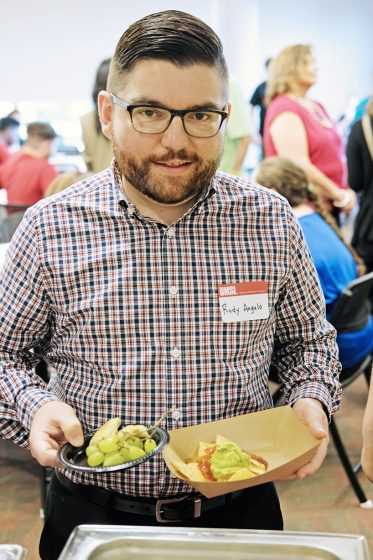
Alumnus Rudy Angulo attended the inaugural Hispanic Latinx alumni event on Sept. 20. (Photo by August Jennewein)
One alumnus present was Rudy Angulo (BA psychology 2012) a recent graduate of the Saint Louis University School of Law who had just passed his bar exam. Although he had not been part of HISLA as an undergraduate, Angulo resurrected the dormant SLU Hispanic Law Student Association with a friend and found the experience invaluable for developing close friends and networking opportunities.
“I want to help out as many young Hispanic people as I can because, how it was with me growing up, when I thought of someone like an attorney or a doctor or anyone that was a really successful person, I always thought that was unattainable for me,” he said. “The only examples of lawyers I’d seen were on ‘Law & Order’ or on television, so I think it’s important for people to meet someone who is like, ‘I’m a successful Hispanic person, and you can be too.’”
Angulo described how, even at 34 years old, his mother still routinely dragged him onto the dance floor at events, which jibes with Negrón’s description of intergenerational relationships in the Hispanic and Latinx community.
“Parents in our community, they are very involved in their students’ lives,” Negrón said. “In the United States people are like, ‘You’re 18, see you later.’ No, that’s not how it works. In our community, you know your grandmother will play a part of your decision of where you are going to go to college.”
Which is why the new alumni group is just one of several initiatives that she is spearheading. For primarily Spanish-speaking parents and grandparents, Negrón would like a bilingual recruiter, pamphlets and financial aid documents in Spanish and orientations with translators.
For the students, she is working on expanding tutoring services and a home base on campus. UMSL is in very early talks for a multicultural center, and Negrón sees that as an excellent opportunity for the last item, even if only so she can move the HISLA event materials and T-shirts out of her cubicle.
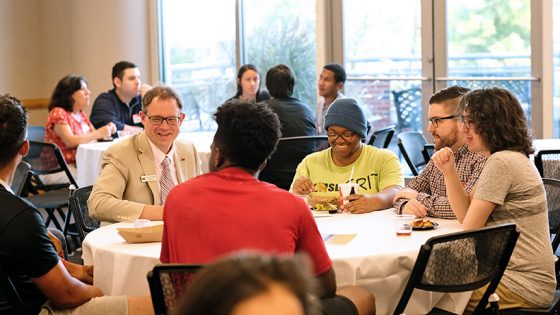
Dean of the College of Arts and Sciences Andrew Kersten (left) is one of the administrators working to increase opportunities and services for students. (Photo by August Jennewein)
“There are sort of three big pieces that Luimil’s working on,” said Andrew Kersten, dean of the College of Arts and Sciences. “One is making sure we have robust systems in place so that when a student – a perspective student – appears, we know what to do next to get them in the enrollment funnel and help see them through to graduation.
“And the next thing is, are we serving our student populations right now? What do they think? Where do they see the gaps are? Do they feel that they are part of the campus community? The answer is absolutely yes, but we can do better, and we’re trying to do better. So, HISLA is an important component of that because the students themselves need to claim their education.”
Creating opportunities and connections with the St. Louis community through alumni, mentoring and scholarships is the last piece, what Kersten refers to as the “life accelerator” portion.
“I’m bullish on the future because we have true, amazing assets,” Kersten said. “This is what the future looks like, it’s already here, it’s already working, and the question is how can we grow it?”
In the meantime, Negrón, Kersten and others are present to help Hispanic and Latinx students with their FAFSAs, find scholarship opportunities, get tutoring or find and build community together. Her students inspire Negrón, and she feels that, through assisting others, she pays back those who helped her along the way. She is optimistic about the future of the Hispanic Latinx community at UMSL.
“Our Latino population on campus is not invisible. You know, maybe better said, they may be invisible sort of right now, but we’re knocking on the door,” Negrón said, literally rapping on the table. “We got to get ready for it. There’s just no way around it.”



